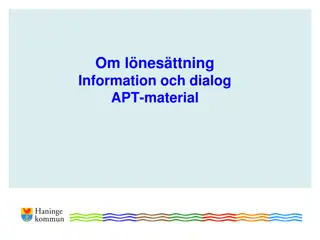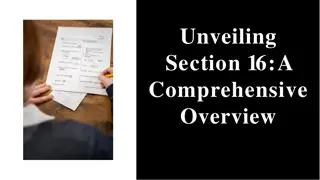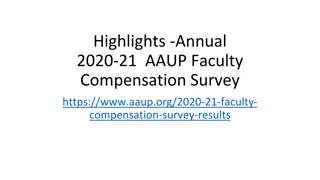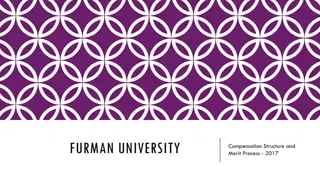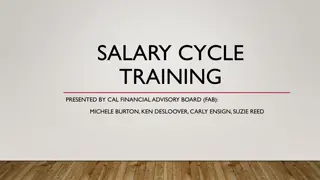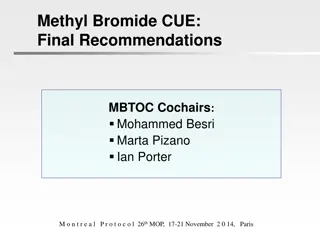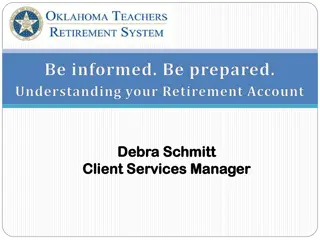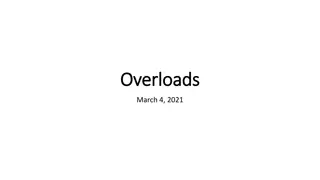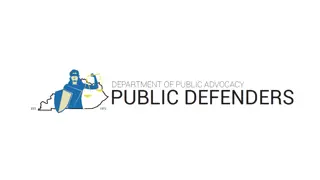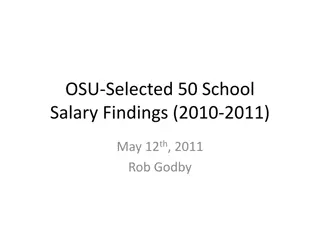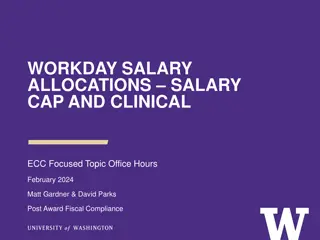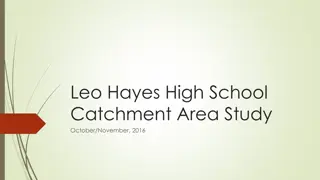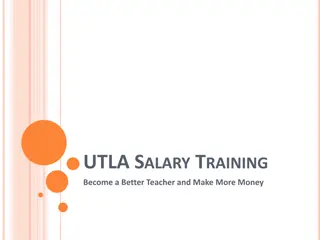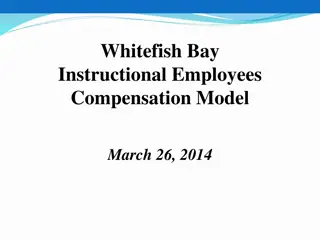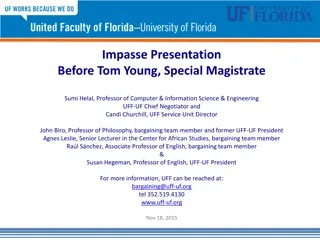Salary Study Recommendations Summary
The salary study conducted on February 24, 2015 highlighted certain flaws in the current state of the professional, administrative, classified, and facilities scales. The options presented include creating new scales with a uniform distribution or adjusting existing scales to eliminate frozen steps. The cost implications and potential adjustments in salaries for different steps were outlined based on the proposed options.
Download Presentation

Please find below an Image/Link to download the presentation.
The content on the website is provided AS IS for your information and personal use only. It may not be sold, licensed, or shared on other websites without obtaining consent from the author.If you encounter any issues during the download, it is possible that the publisher has removed the file from their server.
You are allowed to download the files provided on this website for personal or commercial use, subject to the condition that they are used lawfully. All files are the property of their respective owners.
The content on the website is provided AS IS for your information and personal use only. It may not be sold, licensed, or shared on other websites without obtaining consent from the author.
E N D
Presentation Transcript
Salary Study February 24, 2015 1
2 Current State Flawed Professional, Administrative, Classified and Facilities Scales Frozen steps on each scale Professional: Steps 2-4 Administrative: Steps 2-6 (except for Principals and Program Directors) Classified: Steps C-H Facilities: Steps 2-5
3 Current State Distance between steps is not uniform on any scale ( i.e. Professional ranges from .02% - 8%) Top of scale has continued to extend
4 Options One: Create New Scales with a uniform distribution from step-to-step Two: Adjust existing scales to eliminate frozen steps and implement any recommended salary increase
5 Option 1- Not Affordable Create New Scale with uniform increases from step-to-step (2%) Eliminate frozen steps Approximate Cost: $4 Million Professional
6 Option 2 Adjust existing scales to eliminate frozen steps and implement any recommended salary increase
7 Option 2 Each Schedule Professional: Add additional dollars to unfreeze steps. Administrative*: Collapse frozen steps and make incremental adjustments (new steps 3, 4 and 18) so there is a minimum of 2% between steps Classified*: Collapse frozen steps and make incremental adjustments so there is a minimum of 2% between steps (new steps D- K).
8 Professional Option 2 Constant Amount (sample) Number at Step Current Step Current Salary Difference Between Steps Dollar Increase New Salary 0 $38,169 $38,169 $0 1 $38,932 $38,932 $0 2 $39,711 $779 $39,711 $0 68 3 $39,711 $0 $250 $39,961 $250 51 4 $39,711 $0 $250 $40,211 $500 51 5 $39,748 $37 $250 $40,461 $713 51 6 $39,986 $238 $250 $40,711 $725 63 7 $40,206 $220 $250 $40,961 $755 46 8 $40,462 $256 $250 $41,211 $749 43 9 $40,757 $295 $250 $41,461 $704 53 10 $41,573 $816 $250 $41,711 $138 11 $41,814 $241 $103 $41,814 $0 12 $42,214 $400 $42,214 $0 Current 3% VRS Scale
9 Option 2 Classified and Administrative Scale Collapse frozen steps into one step. Renumber existing steps accordingly. No additional cost or less cost A step raise would be 2% or greater giving more consistency to the scale Presents some issues to current and new employees *See attachments a and b
10 Outcomes Option 2 Elimination of frozen steps increases the competitiveness of compensation potentially increasing retention. Establishes a pathway to correct the Professional scale in the future contingent upon budget Establishes a minimum of 2% between every step on the Administrative and Classified scales.
11 Impact of Option 2 Administrative and Classified Scales There would no longer be a correlation to step number and years of experience. For example, on the Administrative scale step 10 would now be step 6. Establish placement rules on the schedule for new employees to ensure that there continues to be some correlation to experience and education and step placement.
12 Who is impacted? Administrator Scale: There are currently 13 administrators who are on frozen steps. Classified Scale: There are currently 103 classified employees who are on frozen steps.
13 Summary of Recommendations Professional- add dollars to unfreeze steps 4-6. Administrative and Classified- collapse frozen steps into one step and renumber the steps, minimal changes so that each step is at least 2% Additional budget cost is approximately $200,000


